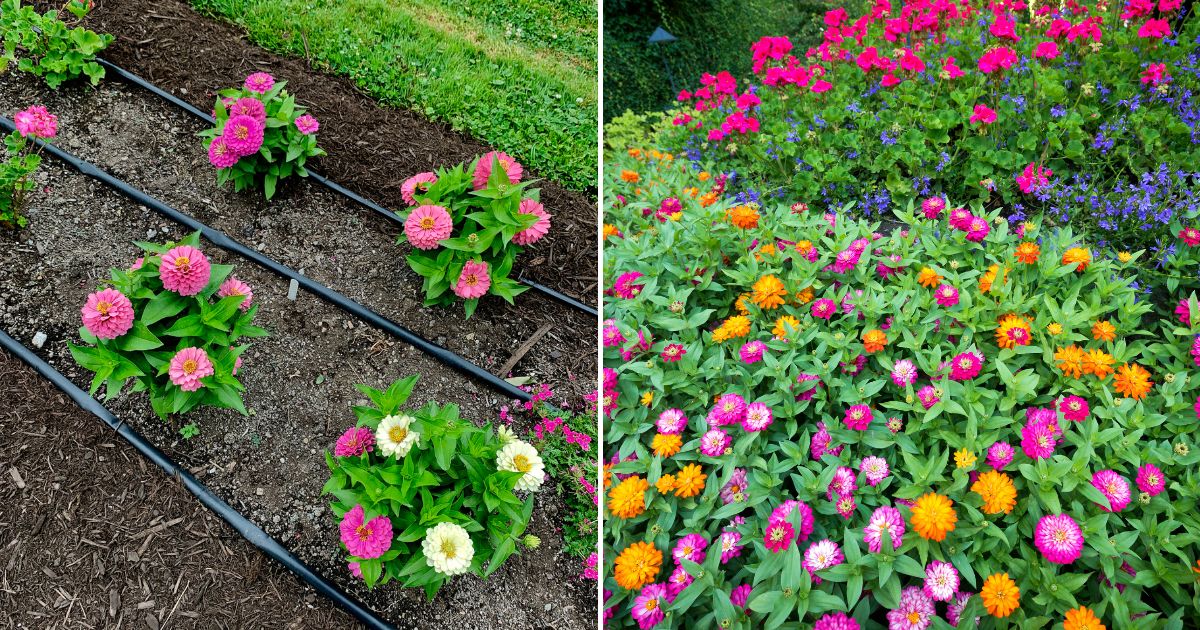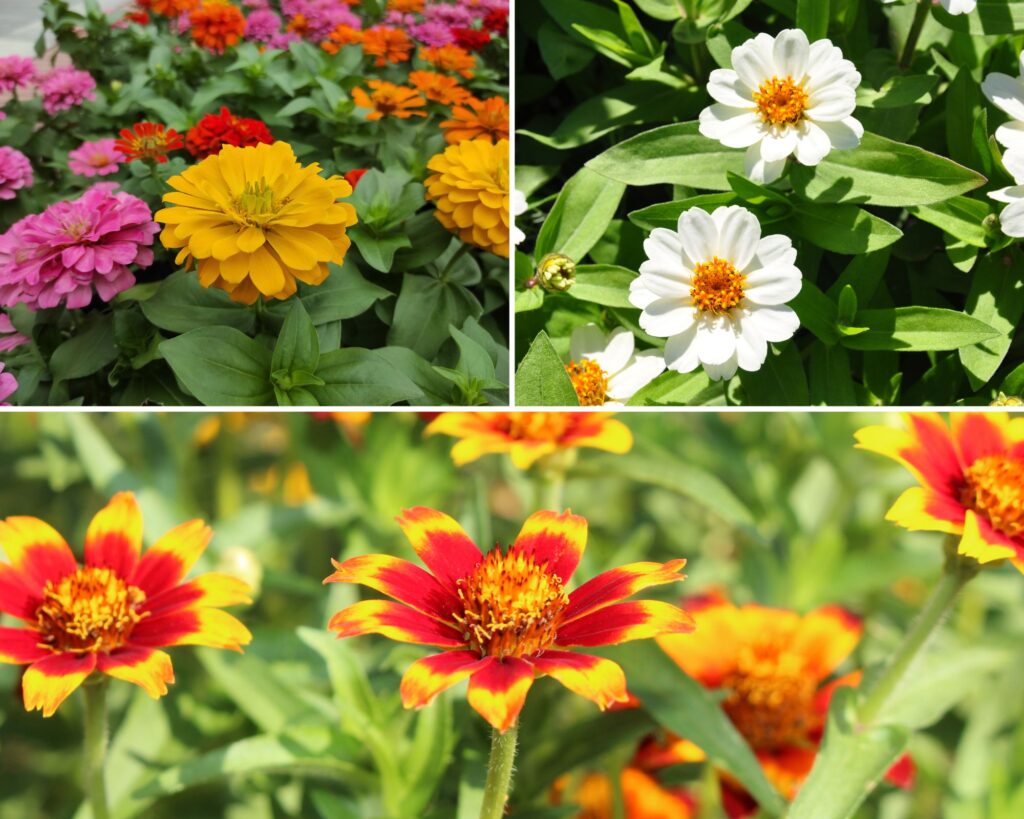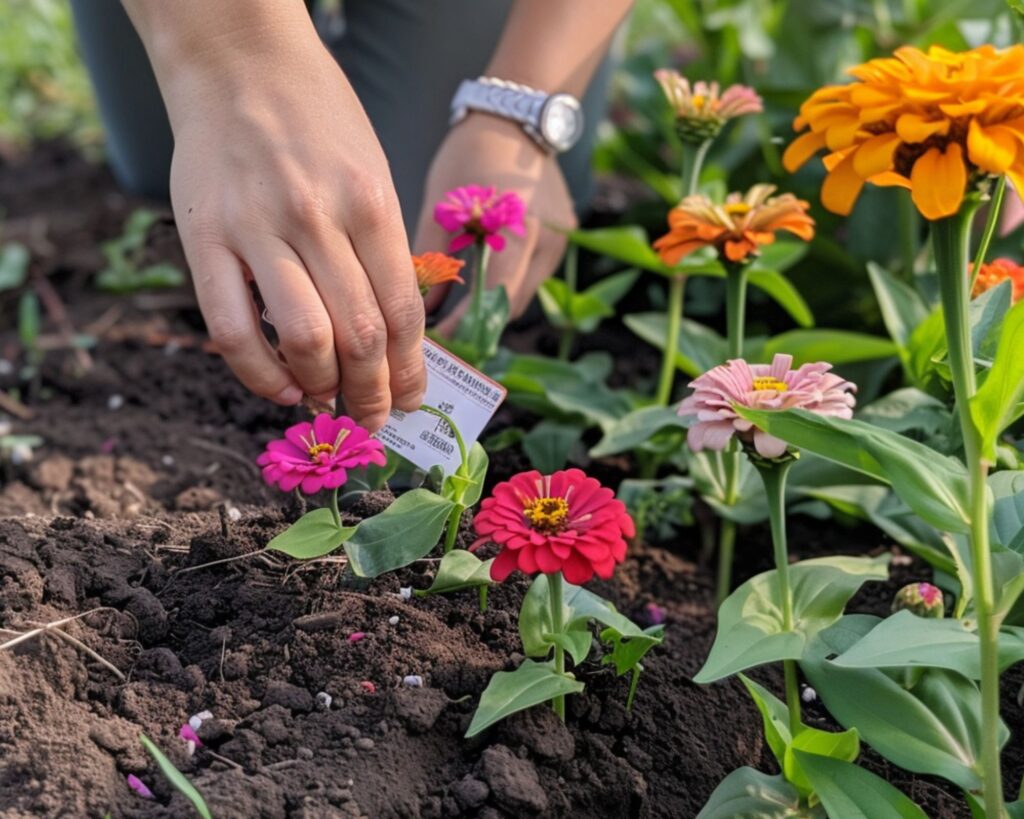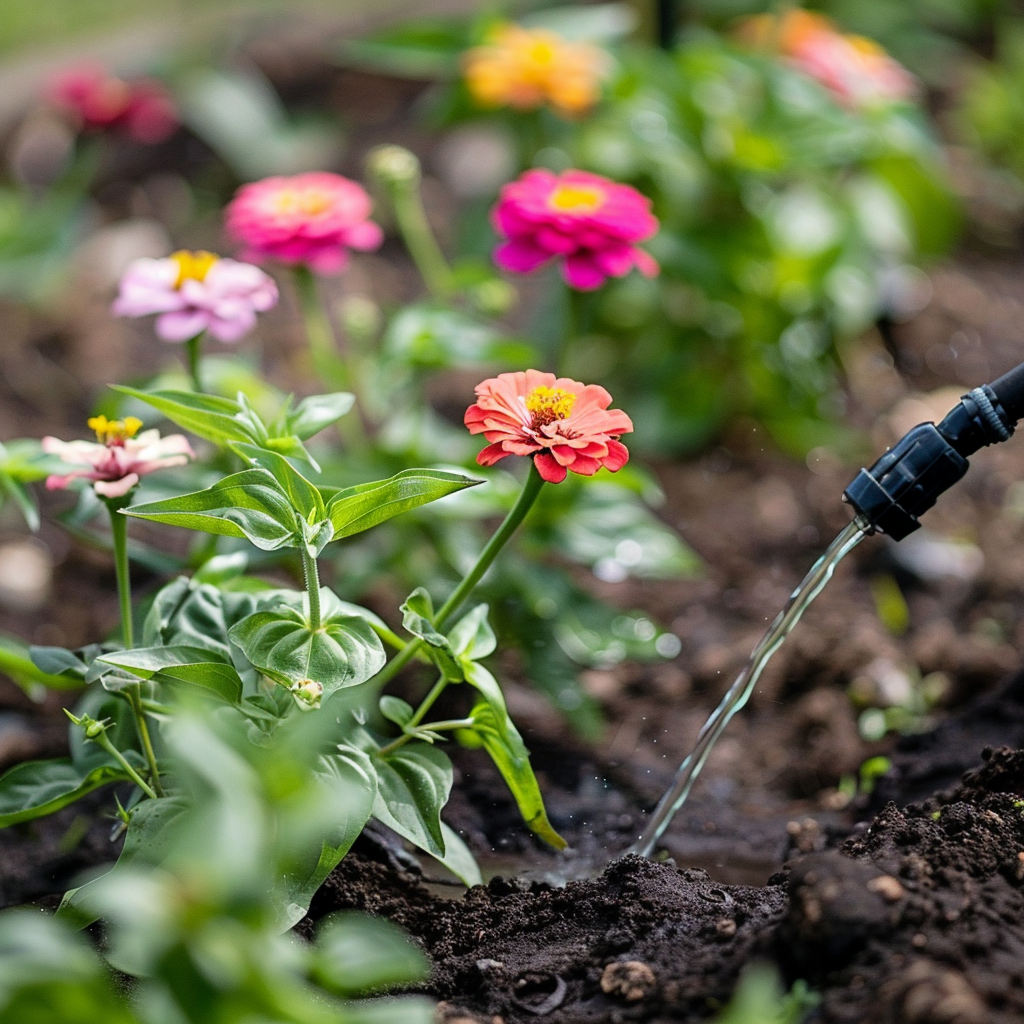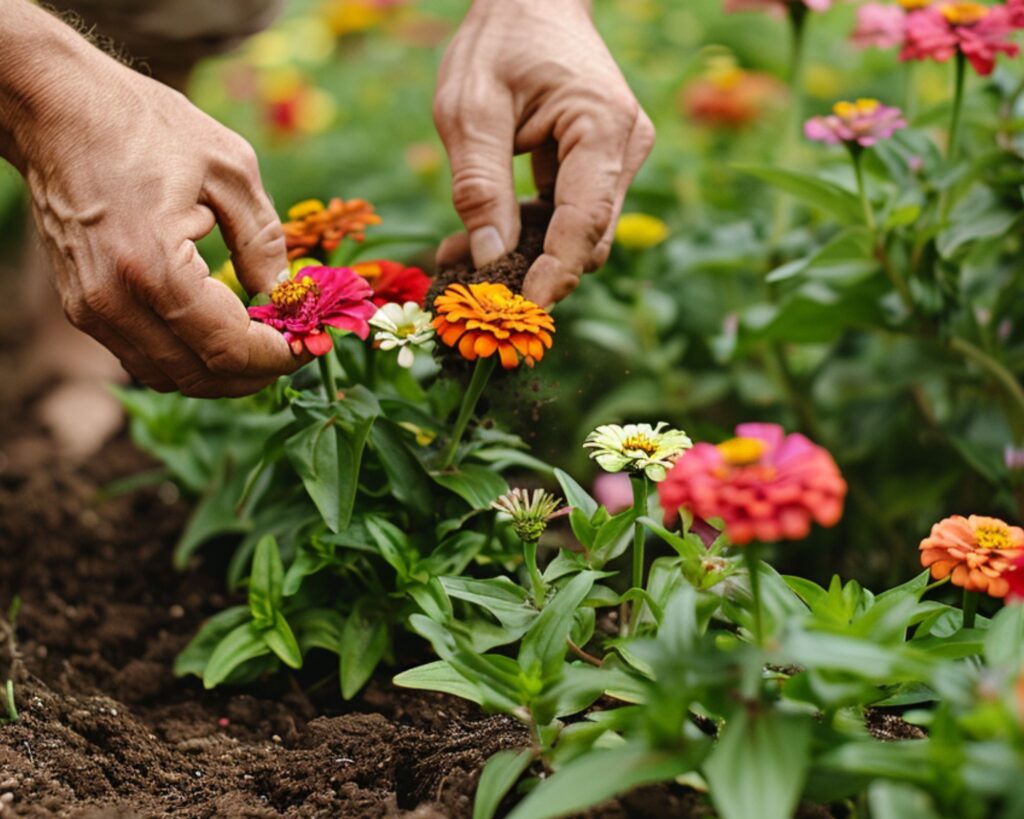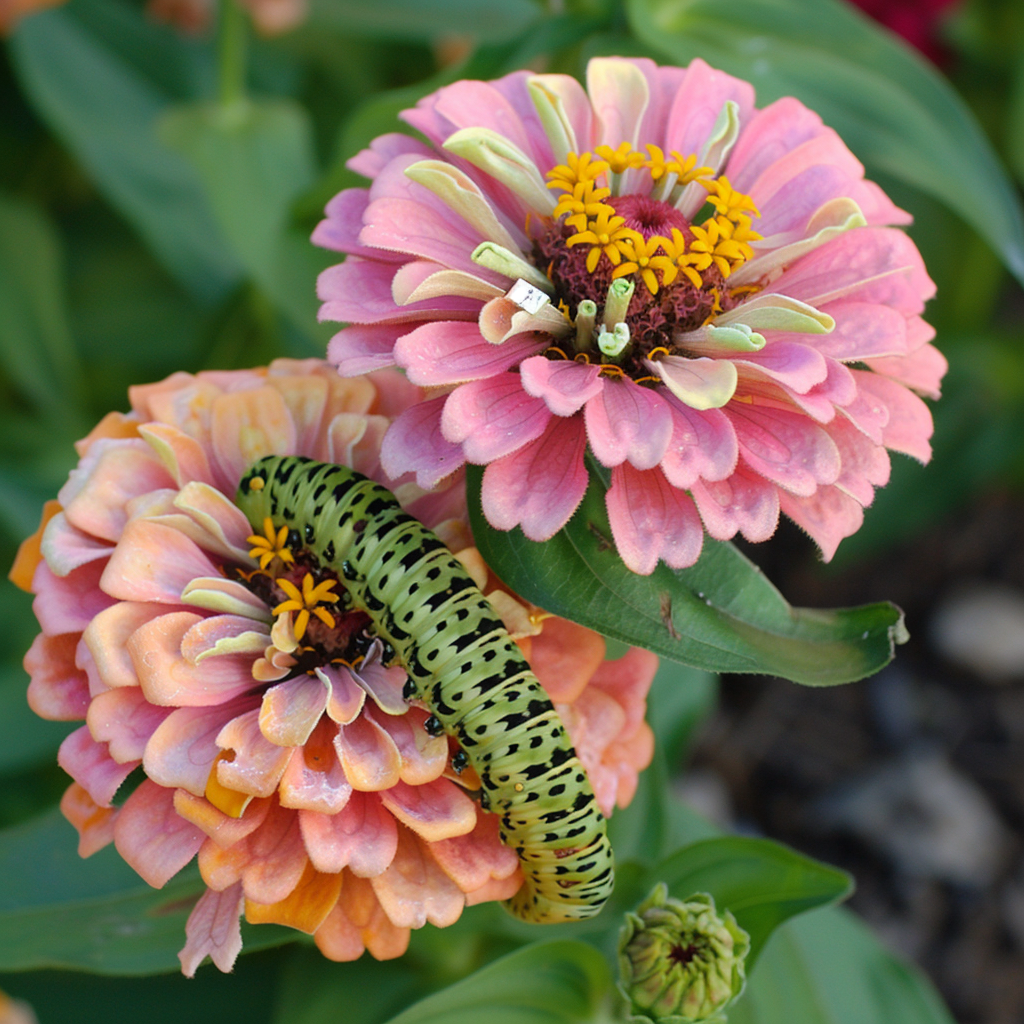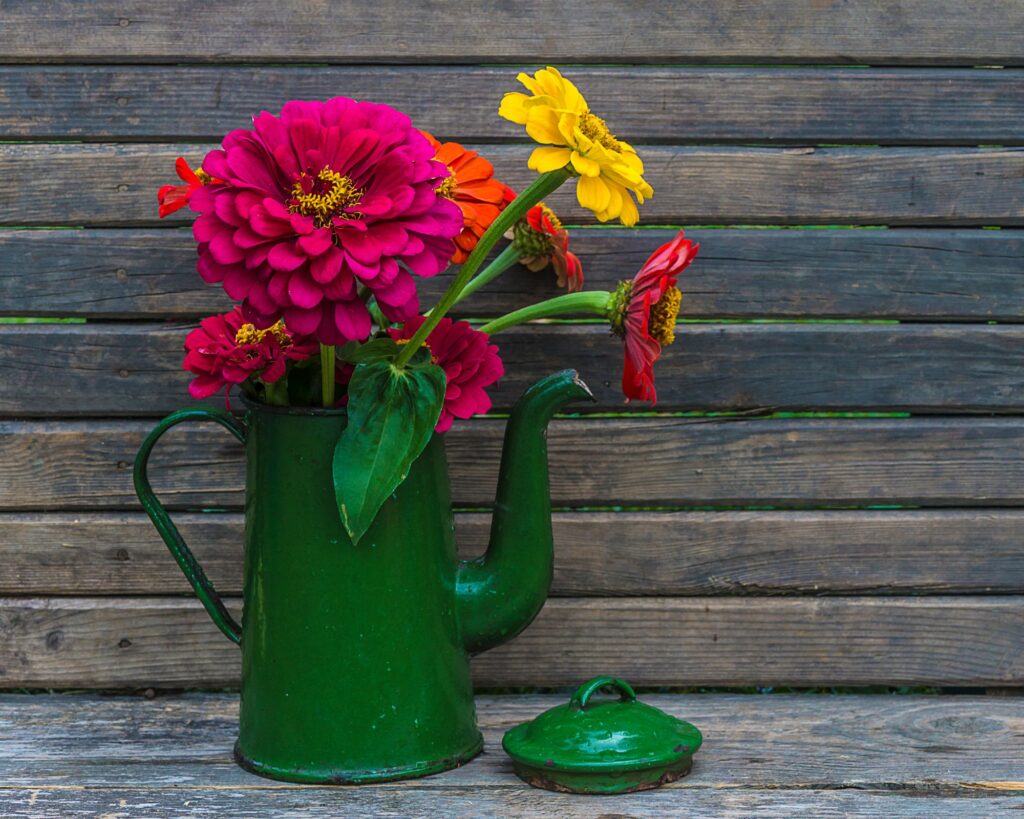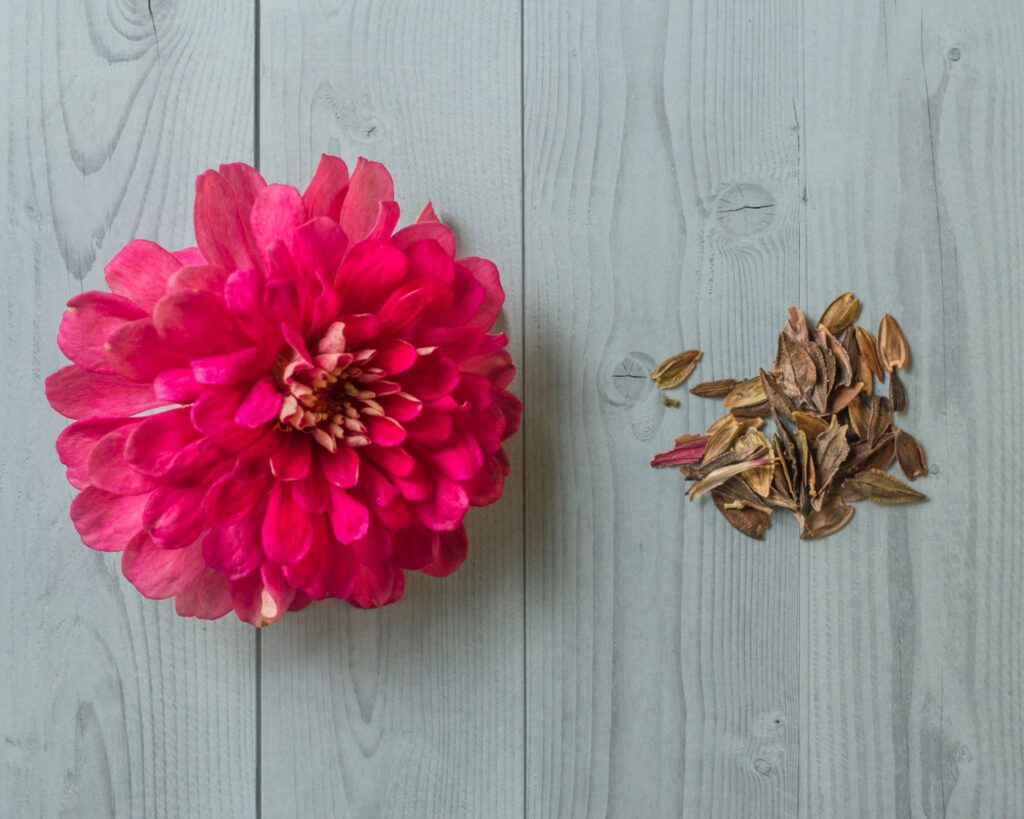Are you yearning to infuse your garden with a burst of vibrant color? Look no further than zinnia flowers. These dazzling blooms, renowned for their radiant hues and extended flowering season, have the power to transform any outdoor space into a vivid paradise.
Whether you’re a novice gardener or an experienced green thumb, growing zinnias is both straightforward and immensely rewarding.
Zinnias thrive in well-drained soil and bask in full sunlight, soaking up every ray to produce their stunning blooms. The secret to their lush growth lies in regular watering and proper spacing, giving each plant room to flourish and outshine its neighbors.
Imagine your garden brimming with lively, cheerful zinnias all summer long. Intrigued? Keep reading to uncover the best tips for planting and caring for these magnificent flowers.
Choosing the Right Zinnia Variety
Zinnia flowers bring vibrant colors to your garden with minimal effort. Before planting, it’s vital to choose the right variety, understand soil and light needs, and decide between sowing seeds indoors or outdoors.
Zinnias offer a range of varieties, each with unique colors, sizes, and shapes. Common types include Zinnia elegans, Zinnia angustifolia, and Zinnia haageana.
Consider the height and flower type when choosing. Some varieties grow up to 3 feet tall, while others stay compact. Colors range from bold reds to soft pastels.
Also, think about disease resistance. Zinnia angustifolia varieties tend to resist common diseases better. Tailor your choices to your garden’s needs and aesthetics.
Understanding Soil and Light Requirements
Zinnias thrive in well-drained, fertile soil. Aim for soil with a pH between 5.5 and 7.5. Use a basic garden soil test kit to check and amend the soil if needed.
Full sun is crucial for healthy zinnias. They need at least 6 hours of direct sunlight each day to produce abundant blooms.
Avoid overly shady areas; lack of sunlight results in leggy growth and fewer flowers. Keep the soil consistently moist but not waterlogged to prevent root rot.
Sowing Seeds Indoors vs. Outdoors
You can start zinnia seeds indoors or sow them directly outdoors. Indoor planting gives you a head start, especially in shorter growing seasons. Sow seeds 4-6 weeks before the last frost date in peat pots or seed trays.
Keep the seeds at 70-75°F for optimal germination. Once seedlings have 2-3 leaves, harden them off before transplanting outdoors.
Outdoor sowing is simpler. Wait until all danger of frost has passed and soil has warmed. Plant seeds 1/4 inch deep in rows or broadcasting them over the planting area. Keep the soil evenly moist until seeds germinate.
Watering Guidelines for Optimal Growth
Proper watering, the right nutrients, and regular pruning are essential for a thriving zinnia garden. Getting these aspects right will help ensure vibrant and healthy blooms throughout the growing season.
Zinnias thrive with consistent watering. Aim to water your zinnias deeply about once a week, ensuring the soil is moist but not waterlogged. During hot, dry weather, you may need to water more frequently.
Use a soaker hose or drip irrigation system to deliver water directly to the roots. This helps prevent mold and mildew by keeping foliage dry. Early morning watering is ideal, allowing leaves to dry off during the day and reducing the risk of fungal diseases.
The Role of Fertilizers and Nutrients
A balanced, slow-release fertilizer will promote strong growth and abundant flowers in your zinnia garden. Apply a balanced fertilizer (e.g., 10-10-10) at planting time and again every four to six weeks during the growing season.
Incorporate organic matter like compost into the soil before planting to improve nutrient availability. Regular feeding with liquid fertilizer can also be beneficial.
Be cautious not to over-fertilize, as excessive nutrients can lead to lush foliage with fewer flowers.
Pruning and Deadheading for Continuous Blooms
Regular deadheading encourages zinnias to produce more flowers. To deadhead, simply snip off spent blooms just above a leaf node.
This process diverts energy back into producing new flowers rather than seed formation.
Pruning zinnia plants can help maintain their shape and promote bushier growth. Cut back any leggy or overgrown stems, ideally in the early morning or late afternoon to reduce plant stress.
Regular pruning and deadheading will keep your zinnia garden blooming beautifully.
Common Zinnia Pests and How to Manage Them
Zinnias are generally hardy, but they can still fall prey to pests and diseases. Proactive measures can help maintain their health and beauty.
Aphids, spider mites, and caterpillars are the most frequent pests attacking zinnias.
Aphids can be controlled with insecticidal soap or a strong water spray to physically remove them. Releasing ladybugs in your garden also helps as they are natural predators of aphids.
Spider mites cause yellowing and loss of leaves. Use a miticide or neem oil to treat infestations. Ensure proper air circulation and avoid overhead watering to prevent mite buildup.
Caterpillars may chew through leaves and flowers. Handpick them off your plants or use Bacillus thuringiensis (Bt), a natural bacterial insecticide safe for other insects and pets.
Preventing and Treating Zinnia Diseases
Diseases like powdery mildew, leaf spot, and root rot commonly affect zinnias.
Powdery mildew appears as a white, powdery coating on leaves. Combat it by ensuring good air circulation and avoiding overhead watering. Apply fungicides if necessary.
Leaf spot, characterized by dark spots on leaves, can be managed by removing affected foliage and using a fungicidal spray.
Root rot results from waterlogged soil. To prevent it, ensure well-drained soil and avoid excessive watering. If an area has poor drainage, consider using raised beds or amending the soil.
By keeping a close eye on your zinnias and taking prompt action, you can enjoy vibrant, healthy blooms all season long.
Harvesting Flowers for Bouquets
Zinnias brighten your garden with their vibrant colors and make beautiful additions to indoor bouquets. By harvesting flowers properly and saving seeds, you can enjoy them year after year.
To harvest zinnias for bouquets, select flowers in the morning. This helps preserve their freshness.
Choose blooms that are fully open. Gently cut the stem at an angle using clean, sharp scissors or pruning shears. Leave about 12-18 inches of stem to ensure easy arrangement in vases.
Remove any leaves that would be submerged in water. This prevents decay and prolongs the life of the bouquet. Place the stems immediately into a container of water.
To extend the lifespan of your bouquet, change the water every two days and trim the stems regularly. Add a floral preservative if you have one available.
Seed Collection and Saving for Next Season
Collecting zinnia seeds is straightforward and rewarding. Wait for the flower heads to dry completely on the plant.
Once dry, gently remove the flower head and place it in a paper bag. Shake the bag to release the seeds. Separate the seeds from the chaff, discarding any debris.
Store the seeds in a cool, dry place in an envelope or a labeled jar. Make sure it is airtight to prevent moisture damage.
Next spring, you can sow these seeds directly into your garden. This practice not only saves money but also allows you to enjoy the same beautiful blooms year after year.
Growing zinnia flowers is a delightful and rewarding experience for any gardener, whether novice or experienced. Their vibrant hues and long flowering season can transform any garden into a lively, colorful space.
By following these straightforward care guidelines, you’ll cultivate a zinnia garden that brings joy and color to your outdoor space all summer long.
Ready to add these cheerful flowers to your garden? Dive into the details and start your zinnia gardening journey today!
